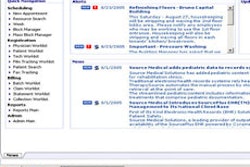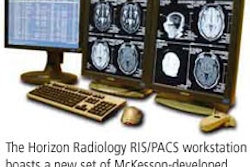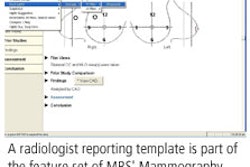Healthcare entities seeking to share medical data by forming a regional healthcare information organization (RHIO) are faced with a difficult challenge: integrating disparate clinical information systems.
According to a presentation at the 2006 Healthcare Information and Management Systems Society (HIMSS) conference in San Diego last month, the key to a successful RHIO deployment is to combine input and direction from both information technology (IT) professionals and primary caregivers.
In 1999, health maintenance organization (HMO) Clalit Health Services of Tel Aviv, Israel, began a project to develop a RHIO to serve its more than 3.8 million customers. According to Dr. Orna Blondheim, CEO of Emek Medical Center in Afula, Israel, Clalit's patient data and medical information systems are varied, with no unification among its 14 hospitals and the multiple clinics and practices that utilize them.
"These disparate systems were not connected, and there was no regular flow of information between them -- not within the hospital nor between the hospital and other care providers, such as between the community clinics and primary care administered in the hospitals," she said.
In fact, at the time, information was transferred within the HMO irregularly and manually by fax or transfer (mail or courier) of patient records. This situation often led to delayed or lost records, was open to violation of privacy issues, and often lacked medical information due to the inaccessibility of data from diverse sources, Blondheim said.
"The reality of providing healthcare in this situation relies on the patient or guardian to provide their own medical records and to be the messenger of their medical history," she said. "Information in this situation is generally not complete; records are not available and the patient does not remember the names of illnesses, procedures, or medications. In a real-time treatment situation, this deprives the caregiver of the basic elements needed to begin effectively diagnosing the patient and ascertaining what tests or procedures are necessary."
The consequences of this scenario are well-known: medical decisions are based on partial information with a decrease in patient safety and the possibility of medical error; tests are duplicated; unnecessary procedures are performed; a longer care cycle occurs; and unneeded medical costs are incurred.
Blondheim explained that Clalit set five goals for itself in the development and deployment of its RHIO:
- Managed patient care while maintaining the continuum of care between different caregivers
- Availability of the relevant medical information to the caregiver, at the point of care and in real-time
- Integrity of the information by providing the caregiver with a completely integrated medical record
- Improved quality of care and reduction in the number of medical errors
- Provide proactive/preventive care versus reactive care to a single episode of illness
To achieve these goals, Clalit combined a top-down and bottom-up approach to the development and deployment of its RHIO, Blondheim said. This entailed primary caregivers and community clinics focusing on the elements needed at the point of care while the HMO's management provided the IT organization and financial backing for the project.
"This combined approach factored heavily in the project's success by making stakeholders in the project of all sectors of the healthcare organizations," she noted.
The steering committee appointed Blondheim as the chief medical officer, who had responsibility for the entire project and approved the work plans and recommendations from the other committees. In addition, there was a legal and medical ethics committee as well as a users committee, which was made up of representatives from the different medical disciplines. The users committee was responsible for determining the features and functionality of the RHIO's electronic healthcare record (EHR) user interface and for providing solutions for the user-related issues to the system implementation.
Blondheim said six elements were required by the HMO for a RHIO solution:
- A defined minimal dataset that supported and permitted the sharing of a patient's available medical information
- A drill-down capability for the data allowing for rapid diagnosis utilizing detailed information
- A decentralized structure that required all information to stay in its originating systems and locations, which permitted the HMO to avoid creating a central database or replace existing systems
- Strict security and privacy
- Performance metrics such that a 15-second maximum be allowed for the collection and display of all relevant data
- Scalability, flexibility, and robustness to allow ease of use and operational system growth
Coincidentally, in early 2000, a clinical data integration pilot project was taking place at the Soroka Medical Center in the Negev, Blondheim said. The facility has more than 1,000 beds, serves more than 1 million residents in south Israel, and is part of the Clalit network. The parallel project shared identical strategy with the HMO's RHIO plan and had successfully implemented technology from medical informatics provider dbMotion of Ra'anana, Israel, to achieve those goals.
The company was able to provide Soroka with an EHR solution that met all its prerequisites, Blondheim said. It provided a completely Web-based product with no central database and no requirement to replace existing information systems. The EHR has no single point of failure in the network, allowing the system to function if a facility goes offline. In such an eventuality, data returned to the caregiver will clearly indicate that the problematic site is not part of the reply, she noted.
The EHR complies with all privacy and security regulations, and is able to provide results to querying clinicians within 10 seconds, Blondheim said. In addition, the product implementation was surprisingly easy.
"Its implementation was quick," she said. "It took six to 12 months with no disruption to workflow, minimal training because it used a familiar Microsoft Windows functionality, and a minimal amount of support staff."
On the basis of the Soroka pilot project success, the HMO decided to implement the product across its entire system, creating the Ofek network, Blondheim said. Essentially, what was created was an EHR comprised of virtual patient objects, she said. As a request is made, information is aggregated from disparate systems (as many as 23 different operational and clinical applications) in different locations and presented to the caregiver in an on-demand basis. The system also enables patient-centric messaging and additional applications such as alerts, notifications, tracking logs, and auditing.
The success of the Ofek network, and its underlying architecture, has proved to be the catalyst for participation in the system by organizations outside the Clalit system, such as the Sheba Medical Center and Rambam Medical Center, Blondheim said. Currently, Ofek has more than 8,500 users from 1,250 clinics, 792 medical units, and 14 hospitals in the Clalit HMO. They view an average of 75,000 patient records comprising 1.3 million pages of information each month with an average response time of less than 10 seconds.
The accomplishments of the Ofek network have been so profound that the Israeli government is seriously considering the creation of a national health information record that will cover all its citizens, regardless of their provider. Not surprisingly, its request for information (RFI) on the project has used Clalit's Ofek network as a template, according to Blondheim.
"The points requested in the government's recent RFI for this project all closely follow the model used by Clalit in terms of technology, legal, and ethical considerations," she said.
By Jonathan S. Batchelor
AuntMinnie.com contributing writer
March 17, 2006
Related Reading
HIT assets help define scope of EMR efforts, February 15, 2006
Integrating disparate systems key to EHR deployment, February 14, 2006
EHR adoption slow and painful in physician practices, October 28, 2005
Small practices may benefit financially from electronic health records, September 15, 2005
Diagnostic imaging and clinical information systems: An integration primer, April 14, 2005
Copyright © 2006 AuntMinnie.com



















